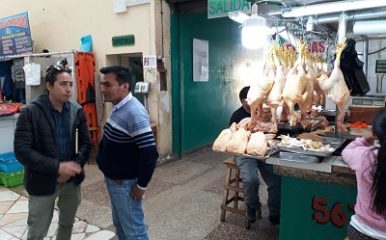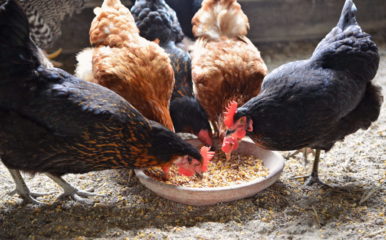
Foodborne diseases
 Foodborne diseases are caused by contamination of food and occur at any stage of the food production, distribution and consumption chain. They are a threat to the health of people and animals – and are a barrier to development as they compromise livelihoods, strain health care systems and damage national economies and trade.
Foodborne diseases are caused by contamination of food and occur at any stage of the food production, distribution and consumption chain. They are a threat to the health of people and animals – and are a barrier to development as they compromise livelihoods, strain health care systems and damage national economies and trade.
Foodborne diseases are caused by bacteria, viruses, fungi, parasites or chemical substances entering the body through contaminated food or water. According to the World Health Organization, every year, an estimated 600 million people – almost 1 in 10 globally – fall ill after eating contaminated food and 420,000 die as a result. Children under five are particularly vulnerable, accounting for 125,000 of these deaths.
Foodborne diseases are closely linked to poverty in low- and middle-income countries. Increasing international trade and longer, more complex food chains increase the risk of food contamination.
Chickens and foodborne disease
Bacteria that cause foodborne diseases, such as Salmonella and Campylobacter, are found at all stages of poultry production and distribution. They are among the most common foodborne pathogens and affect millions of people annually.
The One Health Poultry Hub is leading genetic studies for Campylobacter and Salmonella to assess the characteristics of these bacterial pathogens that associate with risk of disease and transmission at different stages of chicken production and distribution networks (PDNs). Researchers are also exploring whether genetic diversity of these pathogens is influenced by the genetics of the chickens.
Foodborne pathogens and AMR
These bacterial pathogens can also carry genes for antimicrobial resistance (AMR). Controlling the spread of AMR requires a deep understanding of how microbial pathogens enter and move through the food chain, as well as the conditions that promote or inhibit their growth for each type of organism.
The One Health Poultry Hub seeks to contribute to such understanding by using an interdisciplinary framework to detect the key points in chicken PDNs where pathogens are more likely to persist, evolve and spread.
Researchers are assessing the influence on pathogen transmission of the social, economic, cultural and regulatory factors that shape chicken PDNs. They are also considering possible interventions and the most effective point within PDNs for these to take place.


